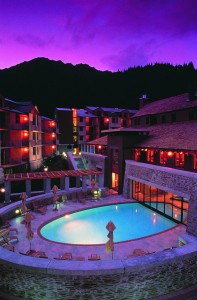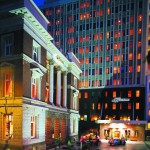Singapore Architect: The Future of Lighting Design
Monday December 20th, 2010 2010, In the News
Buildings and objects always look their best in natural light. Over the years, artificial lighting has been making headway from primarily serving as a source of illumination to becoming a critical building design tool. Building illumination has now evolved from basic lighting to become an integral component of a building’s aesthetics. But the increasingly challenging demands of modern architectural designs have also witnessed a corresponding increase in energy consumption for lighting.
 With the current global interest to conserve resources, achieving lighting aesthetics is just one part of a building’s lighting solution. Building owners have been vocal in their requirements for illumination solutions that when compared with conventional lighting, last longer, require minimal maintenance, do not pollute the environment, reduce energy consumption and of course, reduce overall operating costs. In Singapore, the drive towards achieving GreenMark has also been a strong impetus in this direction.
With the current global interest to conserve resources, achieving lighting aesthetics is just one part of a building’s lighting solution. Building owners have been vocal in their requirements for illumination solutions that when compared with conventional lighting, last longer, require minimal maintenance, do not pollute the environment, reduce energy consumption and of course, reduce overall operating costs. In Singapore, the drive towards achieving GreenMark has also been a strong impetus in this direction.
In a world when aesthetics have to be balanced with being Green, the lighting designs of outdoor and indoor areas of buildings have to incorporate illumination systems and sources that bring out the best in both areas. To achieve this, Green Lighting Designs have now become an integral component of any building space.
Green Lighting Design
Green Lighting Design is similar to a conventional lighting design in that it provides for and fulfills the basic requisites of adequate and appropriate lighting. But that is where the similarities end. Satisfying the technical requirements of lighting is a fundamental requirement of any lighting design. Green lighting designs strike a fine balance between fulfilling technical lighting requirements and attaining a higher level of environmental sustainability.
Factors taken into consideration for Green Lighting Designs include the manufacturing process of lights, components used, energy consumption, operation cost, maintenance efforts and operating lifespan. Compared to conventional lighting alternatives, all of these factors have to be improved in theory and practice. In lighting technology terms, it is the effective replacement of incandescent and florescent light sources with induction and light emitting diode (LED) light sources.

In incorporating Green factors, care has to be taken to ensure that building design elements are not compromised. The architectural design intent for a building or space has to be adhered to and may be further enhanced with the creative use of Green Lighting Designs. In achieving the design intent, the lights must provide a compelling return on investment (ROI) and quantifiable monetary benefits over a pre-determined period of time.